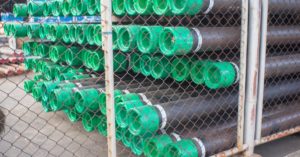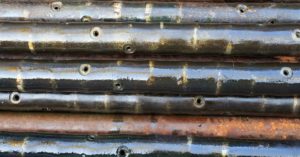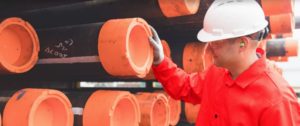Government Pipe Storage Regulations and Inspections
The Gulf of Mexico is a fertile oil field and home to some of the world’s largest rigs. These giants work in depths up to 3,000 feet and may drill more than two miles below the surface to find oil. The following are several of the world’s largest oil rigs or platforms in the Gulf.
The Petronius Platform, owned by Chevron and strategically positioned just outside New Orleans, is a testament to engineering marvels in the oil industry. Soaring to an impressive height of over 2,000 feet, it ranks among the world’s tallest structures. This towering giant doesn’t just command attention for its stature; it boasts a substantial storage capacity, cradling more than 100 million barrels of oil. Operating in the aquatic realm at a depth of 2,044 feet, the Petronius Platform is a vital player in Chevron’s pursuit of efficient oil extraction.
Moving along the Gulf of Mexico’s coastline, we encounter the Baldpate Platform, a creation of Hudson Engineering. Standing tall at nearly 2,000 feet, this platform is situated off the Louisiana coast and serves as a prolific gas and oil producer. With a robust infrastructure featuring seven wells, the Baldpate Platform achieves an impressive daily output of 50,000 barrels of oil. Its strategic location and consistent productivity underscore its significance in the energy landscape.
Venturing further into the depths of the Gulf, we discover the Perdido Platform, a flagship endeavor by Shell. Positioned approximately 200 miles off the coast of Texas, this platform operates in an environment with a water depth of 8,000 feet. The Perdido Platform is a masterpiece, drawing oil from a network of 22 wells. This vast reserve of hydrocarbons traverses through an intricate piping system, ultimately feeding into a riser. The Perdido Platform’s groundbreaking operations exemplify Shell’s innovative approach and commitment to deep-sea exploration.
Meanwhile, the Atlantis Platform, under the ownership of BP, emerges as a semi-submersible rig with a remarkable capacity to extract 200,000 barrels of oil daily. Strategically positioned about 200 miles from New Orleans, this platform employs cutting-edge technology to extract oil beneath the ocean floor. Once harvested, the oil embarks on a journey back to shore through a sophisticated piping network. The Atlantis Platform stands as a beacon of BP’s commitment to sustainable energy practices and the utilization of advanced extraction methodologies.
These platforms—Petronius, Baldpate, Perdido, and Atlantis—illuminate the Gulf of Mexico’s vast potential and the oil industry’s relentless pursuit of innovative solutions for resource extraction in challenging environments. Each platform’s unique characteristics and operational excellence contributes significantly to the energy landscape, reinforcing the importance of offshore exploration and production in meeting global energy demands.
All of these rigs utilize miles of pipe and depend on having that pipe in excellent condition, as an oil leak could be disastrous. Pipe on oil rigs may be in use or in storage. Pipe stored for immediate use are stacked vertically in groups of two or more in the derrick, while pipe racks hold the pipe horizontally for long-term storage. All pipe is vulnerable to corrosion and fatigue due to the harsh conditions of salt water, pressure, and extreme weather. Therefore, pipe protection is key for preventing holes and cracks or damage to the joint threads.
Why Government Regulations and Inspections of Pipe Storage Are Essential
Government regulations have been put in place to ensure the workers’ safety and the oil drilling operation itself. Regular inspections can help rig owners identify any weaknesses in their pipe storage system that could put workers at risk. If pipe and other tubular goods are not chocked, for example, they may lack stability and become dislodged, putting nearby workers in danger. Inspections can also identify flaws in the pipe, catching small cracks or abrasions before they become serious issues. Finally, inspections are a means of ensuring that pipe storage systems comply with government regulations.
What Makes MSI Pipe Protection Technologies an Industry Leader?
Recognized as an industry leader by the American Petroleum Institute in April of 2016, MSI is the top producer of tubular goods and pipe protection products. The company is known for developing innovative products and offering customized solutions for customers in the oil and gas industry. Moreover, MSI Pipe Protection Technologies ensures that its pipes and other tubular products meet required safety standards and regulations for storage and eventual use.




